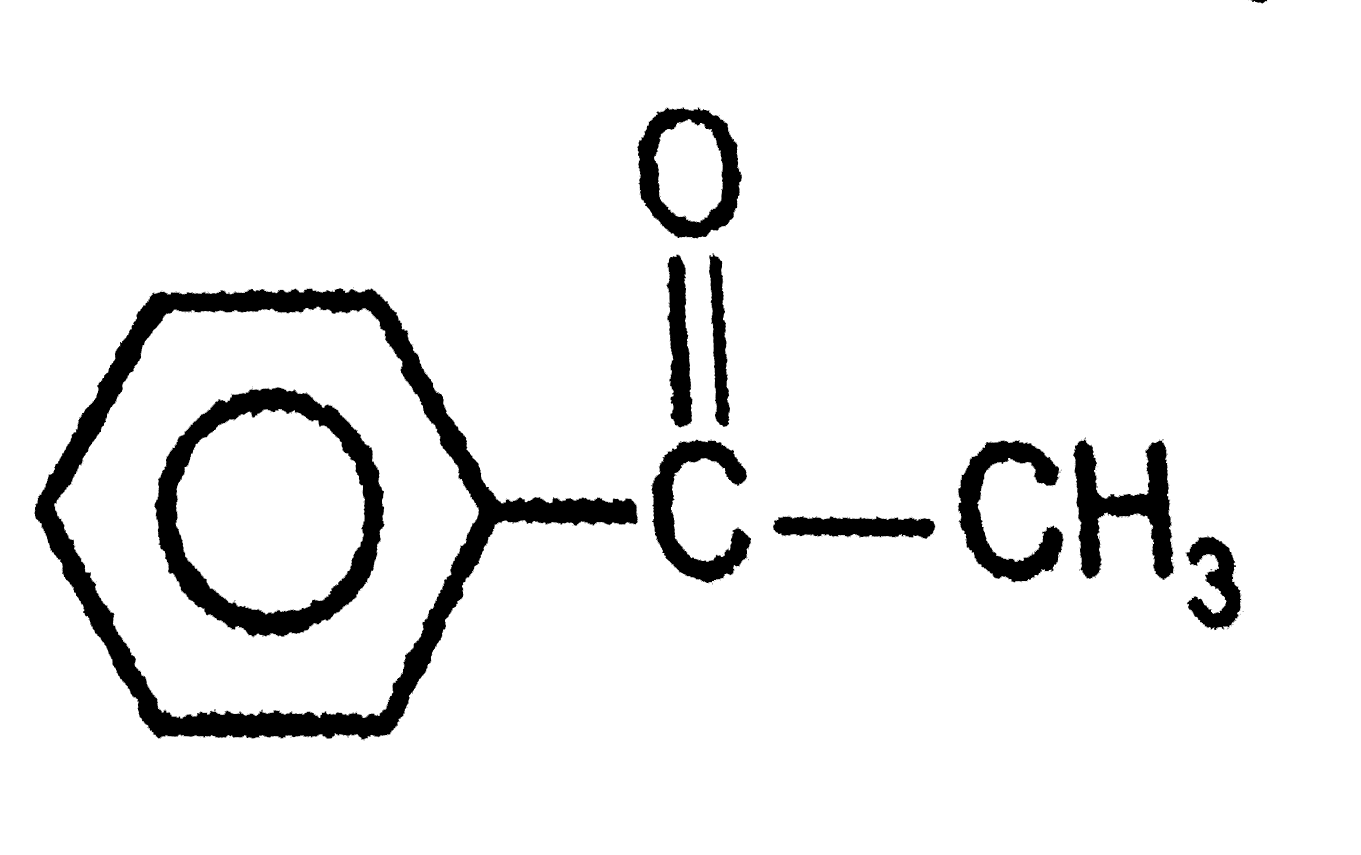(a)what are Etard reaction and Gattermann Koch reaction ? Give one example of each .
( b ) Aldehydes are more reactive towards nucleophilic addition reactions than ketons . Justify .
Step-by-Step Solution:
1. Etard Reaction:
- The Etard reaction involves the oxidation of toluene (or other alkyl aromatic compounds) using chromyl chloride (CrO2Cl2) in carbon disulfide (CS2).
- The reaction leads to the formation of a chromyl complex, which upon hydrolysis yields an aldehyde.
- Example:
- Starting with toluene (C6H5CH3), the reaction can be represented as:
C6H5CH3+CrO2Cl2CS2−−→C6H5CHO+Cr(OH)Cl2
- This results in the formation of benzaldehyde (C6H5CHO).
2. Gattermann-Koch Reaction:
- The Gattermann-Koch reaction involves the formylation of aromatic compounds (like benzene) using carbon monoxide (CO) and hydrogen chloride (HCl) in the presence of a Lewis acid catalyst, typically anhydrous aluminum chloride (AlCl3) or cuprous chloride (CuCl).
- This reaction introduces a formyl group (-CHO) into the aromatic ring, producing an aldehyde.
- Example:
- The reaction can be represented as:
C6H6+CO+HClAlCl3−−−→C6H5CHO
- This results in the formation of benzaldehyde (C6H5CHO).
(b) Reactivity of Aldehydes vs. Ketones in Nucleophilic Addition Reactions
1. Comparison of Reactivity:
- Aldehydes are generally more reactive towards nucleophilic addition reactions compared to ketones.
2. Steric Effects:
- Aldehydes have one alkyl group (or hydrogen) attached to the carbonyl carbon, while ketones have two alkyl groups.
- The presence of two bulky alkyl groups in ketones creates steric hindrance, making it more difficult for nucleophiles to approach and attack the carbonyl carbon.
3. Electronic Effects:
- Aldehydes have a greater partial positive charge on the carbonyl carbon due to the presence of only one electron-donating alkyl group.
- In contrast, ketones, with two electron-donating alkyl groups, experience greater electron donation, which reduces the partial positive charge on the carbonyl carbon, making it less electrophilic and less reactive towards nucleophiles.
Summary:
- Etard Reaction: Toluene + CrO2Cl2 → Benzaldehyde.
- Gattermann-Koch Reaction: Benzene + CO + HCl → Benzaldehyde.
- Reactivity Justification: Aldehydes are more reactive than ketones due to less steric hindrance and a higher partial positive charge on the carbonyl carbon.
- The Etard reaction involves the oxidation of toluene (or other alkyl aromatic compounds) using chromyl chloride (CrO2Cl2) in carbon disulfide (CS2).
- The reaction leads to the formation of a chromyl complex, which upon hydrolysis yields an aldehyde.
- Example:
- Starting with toluene (C6H5CH3), the reaction can be represented as:
C6H5CH3+CrO2Cl2CS2−−→C6H5CHO+Cr(OH)Cl2
- This results in the formation of benzaldehyde (C6H5CHO).
- The Gattermann-Koch reaction involves the formylation of aromatic compounds (like benzene) using carbon monoxide (CO) and hydrogen chloride (HCl) in the presence of a Lewis acid catalyst, typically anhydrous aluminum chloride (AlCl3) or cuprous chloride (CuCl).
- This reaction introduces a formyl group (-CHO) into the aromatic ring, producing an aldehyde.
- Example:
- The reaction can be represented as:
C6H6+CO+HClAlCl3−−−→C6H5CHO
- This results in the formation of benzaldehyde (C6H5CHO).
- Aldehydes are generally more reactive towards nucleophilic addition reactions compared to ketones.
2. Steric Effects:
- Aldehydes have one alkyl group (or hydrogen) attached to the carbonyl carbon, while ketones have two alkyl groups.
- The presence of two bulky alkyl groups in ketones creates steric hindrance, making it more difficult for nucleophiles to approach and attack the carbonyl carbon.
- Aldehydes have a greater partial positive charge on the carbonyl carbon due to the presence of only one electron-donating alkyl group.
- In contrast, ketones, with two electron-donating alkyl groups, experience greater electron donation, which reduces the partial positive charge on the carbonyl carbon, making it less electrophilic and less reactive towards nucleophiles.
- Etard Reaction: Toluene + CrO2Cl2 → Benzaldehyde.
- Gattermann-Koch Reaction: Benzene + CO + HCl → Benzaldehyde.
- Reactivity Justification: Aldehydes are more reactive than ketones due to less steric hindrance and a higher partial positive charge on the carbonyl carbon.
Topper's Solved these Questions
- ALDEHYDES ,KETONES AND CARBOXYLIC ACIDSBOOK - MODERN PUBLICATIONCHAPTER - ALDEHYDES ,KETONES AND CARBOXYLIC ACIDSEXERCISE - REVISION EXERCISES (OBJECTIVE QUESTIONS - LONG ANSWER QUESTIONS )
8 Videos
- ALDEHYDES ,KETONES AND CARBOXYLIC ACIDSBOOK - MODERN PUBLICATIONCHAPTER - ALDEHYDES ,KETONES AND CARBOXYLIC ACIDSEXERCISE - HOTS HIGHER ORDER THINKING SKILLS
15 Videos
- ALDEHYDES ,KETONES AND CARBOXYLIC ACIDSBOOK - MODERN PUBLICATIONCHAPTER - ALDEHYDES ,KETONES AND CARBOXYLIC ACIDSEXERCISE - REVISION EXERCISES (OBJECTIVE QUESTIONS - VERY SHORT ANSWER QUESTIONS )
39 Videos
- ALCOHOLS, PHENOLS AND ETHERSBOOK - MODERN PUBLICATIONCHAPTER - ALCOHOLS, PHENOLS AND ETHERSEXERCISE - UNIT PRACTICE TEST (FOR BOARD EXAMINATION)
12 Videos
- BIOMOLECULESBOOK - MODERN PUBLICATIONCHAPTER - BIOMOLECULESEXERCISE - UNIT PRACTICE TEST FOR BOARD EXAMINATION
13 Videos
Similar Questions
Knowledge Check
Which is most reactive towards nucleophilic addition reactions?
AEthyl acetateBAcetic anhydrideCAcetamideDAcetyl chlorideWhich one is most reactive towards nucleophilic addition reaction?
A B
B C
C D
D
Which one is most reactive towards nucleophilic addition reaction ?
ACCl3−CHOBCH3−CO−CH3C D
D
Which one is most reactive towards nucleophilic addition reaction?
View SolutionWhich one is most reactive towards nucleophilic addition reaction?
View SolutionWhich one is most reactive towards Nucleophilic addition reaction
View SolutionWhich one is most reactive towards Nucleophilic addition reaction?
View SolutionWhich one is most reactive towards nucleophilic addition reaction?
View Solution
